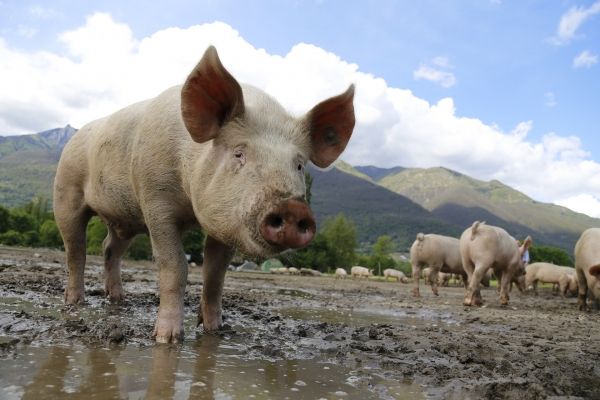Long before Duplin and Sampson counties became the epicenter of North Carolina’s hog farming industry, Roberta McCalop’s family owned 42 acres of farmland on a dead-end road a stone’s throw from the county line. Raising a small number of hogs was a side business to growing tobacco and cotton for most families in the area, and in their free time the McCalops and their neighbors would sit on their porches, picnic in the shade of massive oak trees, and play games in the yard.
But ever since industrial hog farms began swamping this region in eastern North Carolina three decades ago, those days are long gone.
On a sweltering summer morning, McCalop leans against her car and points to the grain storage facility across the road — rising several stories above the flat fields like a mini City of Oz — as a symbol of the invasion. Behind the silos, and largely hidden by tall rows of corn, sits one of North Carolina’s 2,100 “concentrated animal feeding operations,” or CAFOS, many of them located in the eastern part of the state in low-income communities of color. Deafening noise from tractor-trailers speeding along Highway 24 night and day, to and from the hog farms, makes conversation difficult, while the smell from the hog farms just a football field away — a nauseating mix of rotten eggs and decomposition — arrives seemingly out of nowhere. During the summer months, residents are often forced to stay inside with the air conditioning on full blast to escape the stench.
Read more at: Yale Environment 360
Photo Credit: Jai79 via Pixabay


